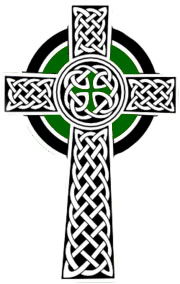 Augustine was the prior of a monastery in Rome when, in 595, Pope Gregory the Great sent him to Britain to Christianise one of the local kings. King Æthelberht of Kent was the target, probably because his Christian bride, Princess Bertha, daughter of Charibert I, King of Paris, was expected to encourage his conversion. Augustine was successful, founding a monastery outside the city walls of Canterbury (Æthelbehrt’s main town), and establishing his episcopal see.
Augustine was the prior of a monastery in Rome when, in 595, Pope Gregory the Great sent him to Britain to Christianise one of the local kings. King Æthelberht of Kent was the target, probably because his Christian bride, Princess Bertha, daughter of Charibert I, King of Paris, was expected to encourage his conversion. Augustine was successful, founding a monastery outside the city walls of Canterbury (Æthelbehrt’s main town), and establishing his episcopal see.
Augustine, whose feast day is 26 May, is generally considered the father of the English Church. But it should be noted that this is the English Church: Augustine was sent to convert the Anglo–Saxons. The Celts, the indigenous people who had been overrun by the Angles and the Saxons in the 5th century, had a well–established church, with their own traditions (such as a different calculation of the date of Easter, and being monastery–centred, rather than bishopric–centred). Augustine failed to bring the Celtic Church into line with Roman traditions, but he was generally successful in converting the local Anglo–Saxons. For example, he celebrated a mass baptism on Christmas Day in 597, at which thousands were baptized. (Sounds vaguely evangelical, doesn’t it?). PT



I think it is wise to be cautious about the period of Saint Augustine, as the sources are few. We do now know from DNA Studies that the people of what is now known as England are mainly Celtic in origin, so the “Anglos-Saxon” influence was taken up by the locals. Some locals had been seen in the Roman Slave Market, and there were known as “Angles” causing Pope Gregory the Great to hope to recover the lost province. He had however reformed the Calendar and that created a different date of Easter to that of those following the un-reformed Julian one. The Orthodox still use the Julian one. Augustine and Gregory were both Benedictine monks, and Augustine warily followed the command in obediance to go to that distant land. The strength of the Celtic Church seems to have been in the West, and in that area there were no cities as we would recognise them, and so the see city of Saint David’s is no more than a village, and in Ireland there were no large villages, so Monasteries were the see centres, and the Bishop one of the monks. Even today this area has few large urban centers, and the nature of the landscape causes spread out settlements or “Kers”. I live in one such “Mané Gouélo” the hill of Gouélo, in the parish of Saint Deilo, who came from the parish of Saint David, Llandaff. The différences between the Celtic and the Latin Church in Great Britain were settled in the main at the Synod of Whitby 664 AD. Let us pray for a similar reconciling Synod in North America.